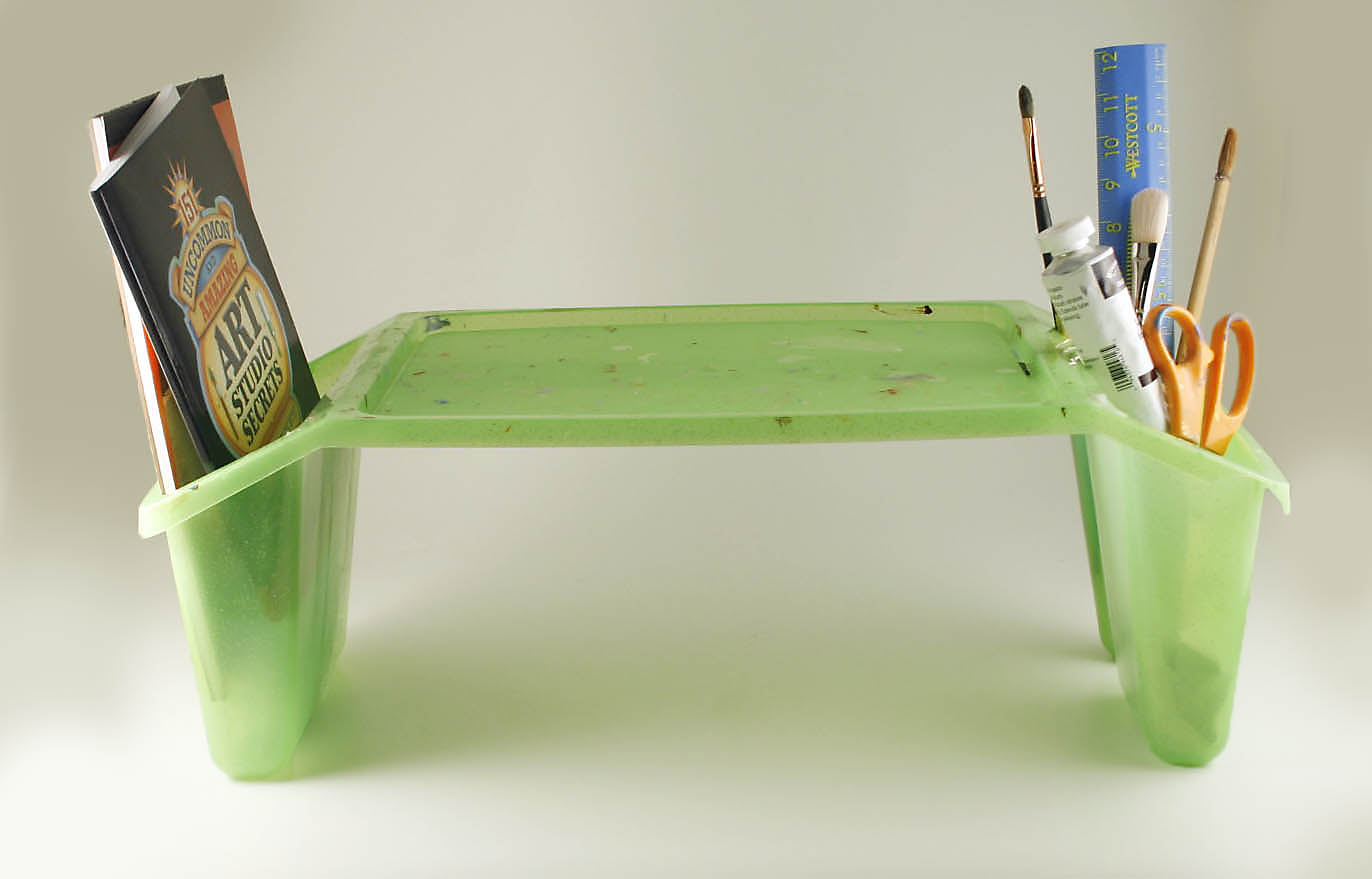Explore Your Natural Desire to Manipulate Materials
Kids’ Lap Tray For Artists – Inexpensive plastic lap trays from Michaels or Amazon are handy on a table near your easel. They elevate your palette, and hold brushes, books, and art materials, too. As artists the drive to express ourselves is especially strong. We also have a natural desire to manipulate materials for creating art. Here’s an assortment of techniques to try, and tips for managing materials.
Reviving Dried Acrylics
I learned the secret sauce for reviving gummy, almost-dry (not totally dry) acrylic paints: one part ammonia to 20 parts distilled water. Mix with a stirrer and store in a jug; keep a small batch handy in a plastic squeeze bottle. Add a drop or two directly into the tube or jar to liquefy the paint. I want to thank my friend Peggi who passed this along to me. After persistently inquiring about it, she learned this from a rep from one of the more well-known artists' paint manufacturers.
Do a Little Art
Tiny stretched canvases, 4” x 5” or less can make strong little statements. There’s something magical about miniatures. You can incorporate the canvases into larger artworks or create a mini series. Find them in craft stores along with diminutive display easels. Add paint smudges to the easels for a “little” authenticity.
Giant Palette Knives
Giant spatulas intended for frosting cakes are shaped like palette knives. They’re cheaper than art knives and are great for sweeping paint onto large surfaces.
Instant Airbrush
Try kids’ spray markers (Sprayza or Blo Pens) over watercolors or acrylics for instant airbrush effects. Coat sprayed color with acrylic medium to make the colors permanent and give them a painterly look.
A Yard of Help
Mahl sticks support your arm and steady your hand for painting details and more. A flat wood yardstick is inexpensive and works beautifully because it stays in place.
Try new materials on occasion to see what resonates with your personal expression.

